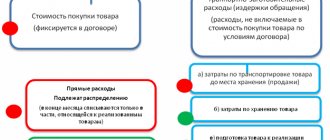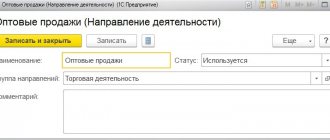Every accountant needs to know in which account (sub-account) to record office supplies in order to keep records correctly and remove the finished materials from balances on time. Only at first glance it may seem that these are little things that you don’t have to bother with. But in fact, even experienced specialists make a lot of mistakes when they try to reflect all the movements of the office. Moreover, different professionals talk about different things, and each of them bases their decision on the laws and requirements of the tax office. Let's remember the general rules that should be used to avoid complaints and fines from inspection authorities and figure out how best to reflect such operations.
Receipt of stationery: what applies to them
In accordance with Instruction No. 157 and paragraph 118, the office may include:
- paper;
- pens;
- rods;
- pencils;
- folders;
- paper clips;
- stapler;
- printer ink.
These are the basic items that can always be classified as stationery, but in reality there are many more. Sometimes they are defined as products that are used for correspondence or paperwork, but this is not a complete formulation.
In accordance with it, the office includes:
- drawing and school supplies (ready sets, rulers, pencil cases);
- office equipment (typewriters, scanners, calculators).
In addition to all this, the work of the enterprise is almost always associated with printing and preparing materials for storage. Therefore, this also includes:
- cross-linking agents;
- stamped goods;
- special threads in some cases;
- glue.
What applies to stationery
The accounting legislation and the Tax Code do not define the concept of office supplies. From the point of view of commodity science, these include the following groups and types of goods:
- writing supplies: pencils, pens, quills, sets of writing supplies, ink;
- accessories for drawing: drawing tools and sets, preparation tables, drawing boards, drawing bars, drawing accessories (rulers, squares), erasers, buttons;
- drawing supplies: paints, brushes, cardboard;
- small office equipment: paper clips, hole punches, staplers, proofreaders, clamps, erasers, glue;
- school goods: sharpeners, notebooks;
- office equipment: calculators.
Business Solutions
- shops clothing, shoes, groceries, toys, cosmetics, appliances Read more
- warehouses
material, in-production, sales and transport organizations Read more
- marking
tobacco, shoes, consumer goods, medicines Read more
- production
meat, procurement, machining, assembly and installation Read more
- rfid
radio frequency identification of inventory items More details
- egais
automation of accounting operations with alcoholic beverages Read more
Separately, it is worth noting a few more items of inventory, which are also classified as CT:
- accounting books;
- plastic stationery;
- photocopying and duplicating equipment;
- paper cutting devices;
- means that provide a protective coating on sheets of paper;
- equipment for destroying documents;
- storage cabinets;
- hole punchers.
Accounting for stationery in accounting
It is worth noting that if a non-financial asset is classified as an office, this does not mean that it should automatically be classified as inventory. The main criterion for whether to count it as fixed assets or as inventories is the period of use. It is important to understand whether the item will be used constantly, repeatedly or only once.
How to lead correctly
They are usually accepted in the format of inventories (inventories), credited at the actual cost of the purchase, in other words, according to the amount of money spent on the purchase:
- in accordance with the invoice issued by the supplier;
- According to the traveler’s reporting, a receipt is attached to it if the employee bought “stationery” on a business trip.
Reception is issued according to the PKO (cash receipt order), which has form No. M-4. The movement will be reflected in accounting cards according to f. No. M-17. Everything is divided by type, product groups and other characteristics. The storekeeper fills out these documents according to the receipt and expenditure documentation, which is provided to him on the day the business operation is carried out. At the end of the month, balances are calculated and signed by an accountant after reconciling the analytical data with the actual data.
How is this enshrined in law?
There are guidelines that indicate how to take these values into account. This is all included in paragraph 49 of the instructions:
- if they were purchased for cash or non-cash, then a receipt order is drawn up using a special form. No. M-4;
- everything will move around the warehouse according to types, varieties, colors, shapes and other differences, written in cards according to f. No. M-17, they are set up for each type of material separately.
All documentation will have to be maintained by the MOL (financially responsible person) on the basis of receipts and expenses with the date stamped when exactly the business transaction occurred, so that the CT can be taken into account at this cost.
Receipts are made through debit 10, which is called “Materials”. Then, according to the Instructions, the organization can independently determine subaccounts for each type of inventory. Therefore, in one accounting account it appears 10.01, which is responsible for CT, and in the other it is 10.09, necessary for other goods.
Table showing which subaccount is allowed to be used and how to properly capitalize various stationery items
| Dt | CT | What does it mean | Supporting documents |
| 60.01 | 51 | Paid to supplying company | Extract |
| 10.01 | 60.01 | Accepted | TN, filled in according to f. M-4 |
| 19.03 | 60.01 | Input VAT is taken into account | SF is added to the previous one |
| 68.02 | 19 | VAT accepted | Another invoice |
| 71 | 50 | Employees who go on business trips are given money | RKO |
| 10.01 | 71 | Acceptance of office from a traveler | A sales receipt is issued and supported by the case |
| 50 | 71 | Funds that accountable persons did not spend are returned | PKO |
To which account should stationery be attributed and how to take it into account?
The main one is 10, called “Materials”. Their appearance should be recorded as a debit on subaccount 10.09, but there are other options.
Regardless of the type of payment, the transactions should be entered in the following form:
| Procedures | Dt | CT | According to what |
| Office costs are paid | 60 | 51 | Documentation from the bank is attached |
| Everything is moved to storage areas | 10.09 | 60 | PKO f. M-4 or invoice from the supplier signed by MOL |
| VAT on the purchase of office supplies | 19 | 60 | SF from the supplying organization |
| Accounting for incoming VAT | 68 | 19 | |
| Processed by JSC | 60 | 71 | Advance documentation |
| Credited to CT | 10 | 60 | F. M-4 |
| Input VAT | 19 | 60 | Papers that confirm arrival |
| VAT included | 68 | 19 | A receipt showing VAT separately |
To which subaccount should I assign stationery and how to capitalize them later?
Organizations operate in two different ways:
- each item indicating price and quantity;
- a homogeneous group is isolated; as an example, different folders or writing instruments can be cited.
It is worth remembering that method 1 is more reliable; tax authorities have no questions about it. It is easy to use if you purchase a lot of office supplies, but it is sent to employees gradually, in small portions. Another advantage of the method is that you can calculate the need to ensure a normal workflow.
The main entries will be associated with accounts Dt 10 and Kt 60 and 71. There is no big difference in which sub-account everything is credited to, the main thing is to reflect your desire to conduct business in a certain way in the UP.
Business Solutions
- the shops
clothes, shoes, products, toys, cosmetics, appliances Read more
- warehouses
material, in-production, sales and transport organizations Read more
- marking
tobacco, shoes, consumer goods, medicines Read more
- production
meat, procurement, machining, assembly and installation Read more
- rfid
radio frequency identification of inventory items More details
- egais
automation of accounting operations with alcoholic beverages Read more
We count the entire receipt as one piece
If this option was chosen, then everything is credited as 1 unit and will be written off the same way. To use this method, you need to issue an order, on its basis the office will be accepted and immediately left for needs.
In this case, the PKO is attached to a copy of the delivery note from the supplier, this will allow the receipt to be tracked if necessary.
To deregister, employees’ applications are attached to an invoice or other similar document.
Among the advantages is ease of use. But this method can provoke a lot of questions from the tax inspectorate.
Acceptance by quantity
This is another option that is not used as often. Here only the purchased volume will be counted, without names or forms. It will look like “Stationery, 15 pcs.” This is convenient, but can create issues due to the large difference in cost. For example, disposing of one chair will cost many times more than a ballpoint pen.
How to keep records without counting 10
In practice, sometimes accounting is carried out without “Materials”. Typically, this method is chosen when it is planned to immediately use CT for the needs of the company. And these expenses can be recorded as services as expenses. All this is recorded in accounting entries, where Dt is 25-26 and 44, and Kt is considered as 60 and 71.
If only small amounts are used in this algorithm, then the tax authorities will not have any questions. But if a lot of money is regularly spent on this and the article is often repeated, then such an error will provoke the interest of inspectors.
Difficulties may also arise if it is necessary to deduct the amount of input VAT, because the purchase was not accepted for accounting according to the rules.
Another difficulty is trying to track what exactly was spent and in which workshop or department. When checking, it will be very difficult to understand which employees are ordering too much, and which departments are purchasing too much and is costly and unjustified.
Documents without which stationery and other office expenses cannot be written off
February 25, 2021
The range is huge. Until now, we received stationery according to the nomenclature and immediately wrote it off per unit cost. But sometimes there are so many types of purchased goods that the accountant spends several hours just entering information for all items.
13:09 Alexander Pogrebs, expert at SKB Kontur Magazine “” No. 2/2016 Webinar plan: Accountants take accounting of production materials seriously.
But stationery, drinking water, furniture and other equipment are written off with less scrupulousness. As a rule, even without supporting papers. But this threatens tax consequences for the company. Inspectors will cancel expenses that are not supported by documents. Let's start with stationery. Usually they are accepted for accounting on the basis of an invoice from the supplier or on the basis of an advance report (if the stationery was purchased by an employee).
Each accountant accounts for office supplies differently. Someone painstakingly arrives at each position. For example, like this: black Pilot gel pen, blue automatic ballpoint pen BIC, etc.
Inspectors will definitely not have any complaints about such accounting, but it requires a lot of time. Another option is not to count each item separately, but to write “Stationery” and indicate the quantity.
How to document the purchase and use of office supplies
There are two options to purchase and arrive:
- piece by piece;
- homogeneous groups.
A predetermined method should be noted in the company's accounting policy and always adhered to.
When CT scans are transferred to the person responsible for the materials, a certain action has to be taken:
- draw up a special receipt order using the unified form No. M-4;
- On the invoice that arrived from the supplier, put a stamp where the name of the company, the date of receipt of the MC and the cash register number will be entered.
In the second case, the responsible employee must sign this document. The cost of goods used will be expenses according to PBU 10/99, that is, it is considered that these are ordinary activities of the organization.
When they are issued to employees, they are written off in accordance with the drawn up invoice requirement according to f. M-11.
To simplify work and increase efficiency, it is worth having appropriate programs that will facilitate the preparation of documentation. To make it easier to choose among the variety of software, we recommend contacting Cleverence. Our specialists will help you find the right software for your business that automates work processes by combining the work of accounting systems and equipment, for example, data collection terminals. So, for those who use 1C: Accounting there is a software product called “OS Inventory”.
How to record office supplies
Fill out the release of stationery from the warehouse to the organization's divisions with a demand invoice in form No. M-11. In it, indicate the name of the department to which the stationery was issued, the account number on which the costs of maintaining this department are taken into account (for example, account 44 when transferring stationery to the sales department) (clauses 97 and 98 of the Methodological Instructions, approved by order of the Ministry of Finance of Russia dated December 28, 2001 G.
No. 119n). If stationery is released from a warehouse to an intermediate division of the organization (for example, to the administrative office), then at the time of transfer it is not known how much each division of the organization will consume (for example, accounting, purchasing department). In this case, as each department spends them, it is necessary to draw up acts (reports) in any form. They should indicate the name, quantity, cost of stationery and confirm the appropriateness of their use.
Write-off of stationery
All that remains is to figure out which accounting account to assign the spent office supplies to. Here it is worth remembering that this group of material assets is directly involved in the main activity. Therefore, you can write it off to your account. 26, which is responsible for general business expenses, and 44, which reflects sales costs.
When they are given to employees, they are taken from the warehouse. To do this, you need a demand invoice, which is filled out according to f. M-11. Another option is to use a standard form that the company developed specifically for this task, but in this case the document must be included in the accounting policy and always be used. It is imperative to indicate the cost of the CT scan as of the date on which the issuance took place.
In which accounting account should stationery items subject to write-off be reflected?
The accounting entry will look like this:
- Dt 26 or 44 - the amount is indicated for everything that was transferred for use.
The simplified version has a slightly different algorithm. They can legally write off all costs to standard and core activities immediately after acquisition. For this reason, they do not issue transfers to employees. All amounts will be recognized upon payment.
What the postings for writing off the office will look like - sample acts
If “stationery” was accounted for as production inventories, then the company has the right to completely remove them from the balance sheet when they are issued to the employee. There is no further control. This is formalized as Dt 91-94 and Kt 209.
As we have already said, if an item is issued from a warehouse, then form M-11 is filled out, which will become the basis for drawing up a write-off act. It can be written in any form, the main thing is that it is signed by MOL. It is also important to indicate all the names and costs of accessories.
The order in which CT will be written off
After we have figured out what account to include office supplies in, it is worth finding out how they are deregistered. When writing materials are transferred from the warehouse to responsible employees, it is necessary to complete the following paperwork:
- limit-fence card according to f. M-8;
- invoice-request M-11;
- invoice, which is drawn up in the interindustry form M-15.
Sometimes accounting includes refilling cartridges here, but this is the wrong approach. This is what pp. says. 2 from clause 1 in Article 254 of the Tax Code of the Russian Federation. These costs should be translated into material costs.
It remains to understand which accounting account to include the office that has served its purpose. First, a corresponding act is drawn up. It must include:
- consumption standard, if available;
- name and amount of costs;
- where everything was spent;
- price per piece and all items;
- additional information if required.
In accounting it will look like this:
| Dt | CT | Description | Base |
| 26 | 10.01 | Pens written off | Request-invoice |
What the documents will look like and who will sign them is established by internal regulations - instructions, orders, regulations.
How to work with VAT
We already know which accounting account to put office supplies into, but it is important to remember about taxation. Each company has the right to deduct all VAT charged to them by sellers. All this is done on the basis of pp. 1 and 2 tbsp. 171 of the Tax Code of the Russian Federation.
Everything must be written down on a separate line in all settlement documents in accordance with Art. 168 Tax Code of the Russian Federation. The deduction occurs in accordance with paragraph 1 of Art. 172.
Tax applied to corporate profits
The cost of CT should be included in other expenses, this occurs on the day when they are transferred to employees for use, this is indicated in Article 264. Tax Code of the Russian Federation.
What do they pay under the simplified tax system?
Each company that operates according to this principle reduces its income by all incurred expenses specified in Art. 346. The office also belongs here if it complies with Article 264 of the Tax Code of the Russian Federation. VAT amounts are also included in costs, but they must be entered on a special line. Their cost is recognized as part of the amount spent after payment.
prednalog.ru
In practice, accounting for office supplies is not a very pleasant process in the accounting department, since it requires painstaking and time-consuming work, with relatively small amounts in receipt documents. How to properly capitalize office supplies, in what account should they be accounted for, and how to write them off as cost? We will try to consider all these questions in the article, taking into account already established practice.
The most reliable way to reflect information, which is at the same time the most labor-intensive, is accounting for each unit of goods. Those. As it is written in the invoices, we register the goods: in quantity and amount.
For this accounting option, accounting is used. Here you can create a group “Stationery”, where the name of the product is indicated by name: “binder”, “folder with strings”, etc. Accounting for stationery is documented by accounting entry D-t 10 K-t 60.71, etc. .
In which subaccount should stationery be accounted for in this case?
In principle, there is no big difference here, but it is important to consolidate this position in the accounting policy.
Question: We constantly buy stationery for office needs.
Are office supplies considered materials and is it necessary to include all office supplies separately on the invoice each time? Maybe you can just indicate “office supplies on invoice”?
(“Accounting. Taxes. Law”, 2006, n 
“Accounting.
Anyway, all this is written off as expenses at the time of receipt.
Taxes. Law", 2006, N 8 Question: We constantly buy stationery for office needs. Are office supplies considered materials and is it necessary to include all office supplies separately on the invoice each time? Maybe you can just indicate “office supplies on invoice”? Anyway, all this is written off as expenses at the time of receipt.
Tatyana Rabotinskaya, chief accountant Answer: Yes, office supplies are recognized as materials in accounting. Assets used for the management needs of the organization are accepted for accounting as inventories (clause
2 PBU 5/01 “Accounting for inventories”). Account 10 “Materials” is intended for accounting for such property. The receipt and issue of stationery is reflected by the following entries: Debit 10 Credit 60 - stationery is capitalized; Debit 19 Credit 60 - input VAT taken into account; Debit 26 (44) Credit 10 - the cost of stationery is written off as expenses.
Can I return it to the supplier?
It depends on the conditions under which they were purchased. It is important to determine in advance who bought and what is not suitable for CT. If the purchase was made privately by an individual for use, then the law “On the Protection of Consumer Rights” applies, which confirms the possibility of returning low-quality items or items that do not meet expectations.
But when registering such an operation by an enterprise, problems arise, since the Civil Code does not provide for the possibility of returning or changing quality goods. And the law that protects individuals has no effect on companies. We have to hope that the seller will meet you halfway.
We looked at what account office supplies go to, where to include their receipt, how to spend and write them off. This is a simple operation, but it raises questions and disputes among many specialists. We advise you to adhere to accounting by quantity in order to attract the interest of the tax authorities. This method will help you get rid of the difficulties with counting balances, controlling them and spending them.
In the video you can see how inventory is carried out in a warehouse using TSD and Warehouse 15 software from Cleverence.
Number of impressions: 25785
I'm asking for advice. How to radically simplify stationery accounting
The first to seek advice from her colleagues through UNP was chief accountant Evgenia Zaturina from Tyumen: “Our company buys stationery very often and in large quantities.
The range is huge. Until now, we received stationery according to the nomenclature and immediately wrote it off per unit cost. But sometimes there are so many types of purchased goods that the accountant spends several hours just entering information for all items.
Is it possible to solve the problem by accounting for “officework” in some other way?” Yes, you can. Here are the options suggested by colleagues.
Option No. 1: register a consignment of goods as a unit Glavbukh LLC "TOR" from the city.
In Blagoveshchensk, Amur Region, Victoria Tsirulnikova advises drawing up an order from the director stating that office supplies are purchased only in the required quantity and are immediately put into operation.








